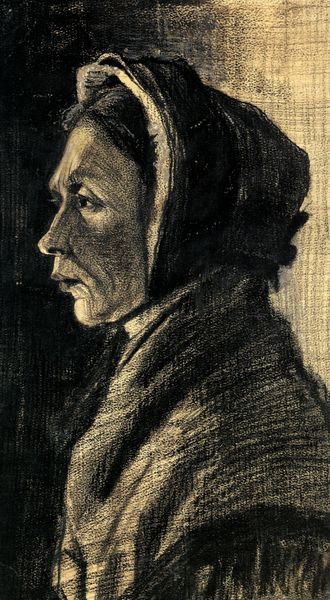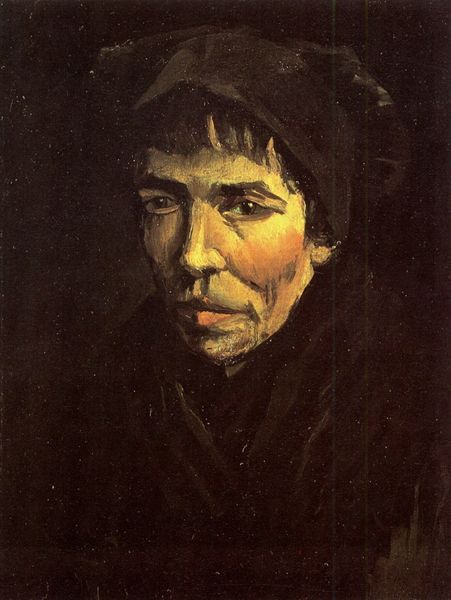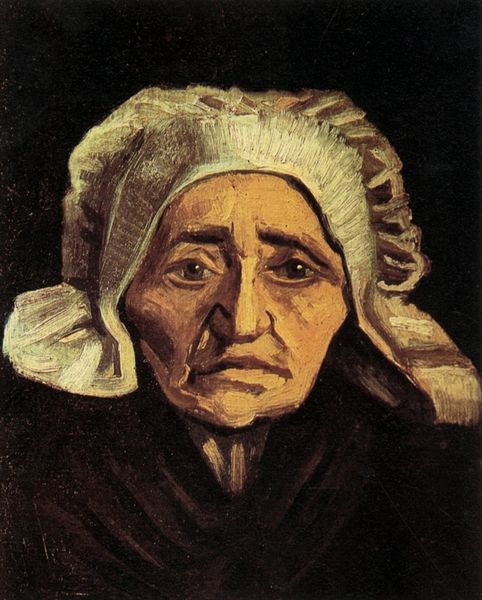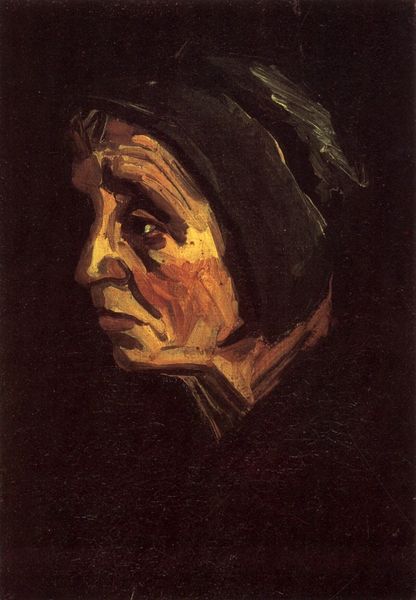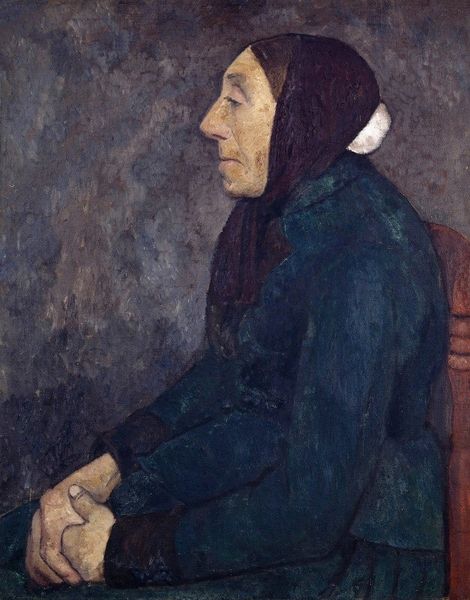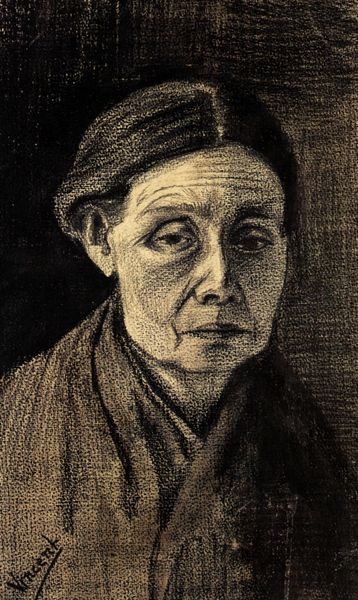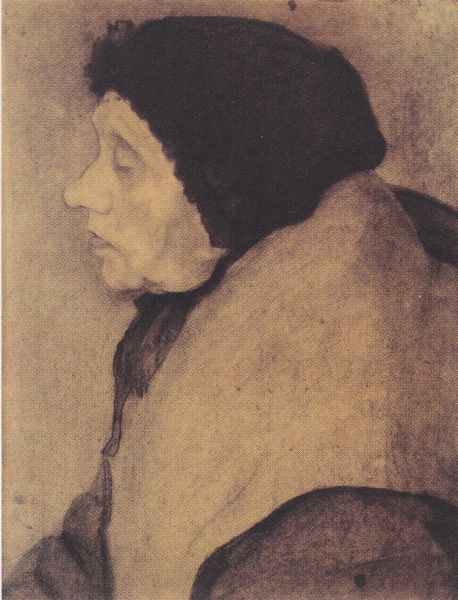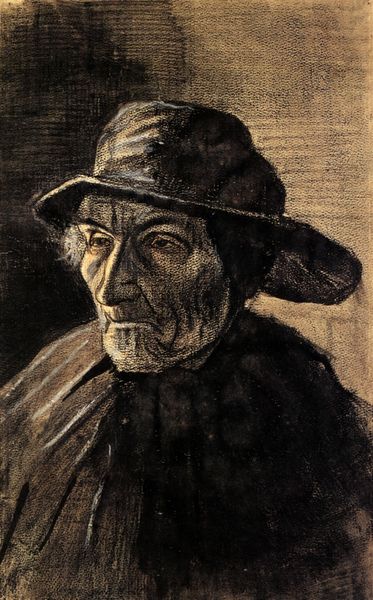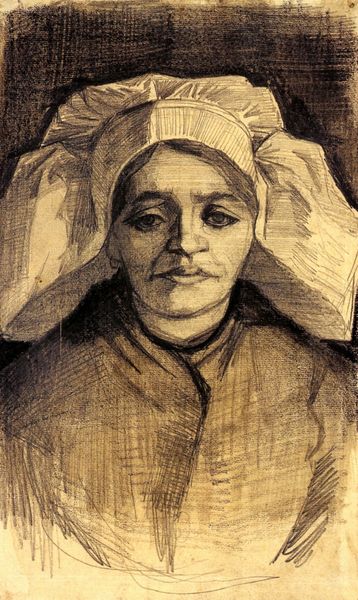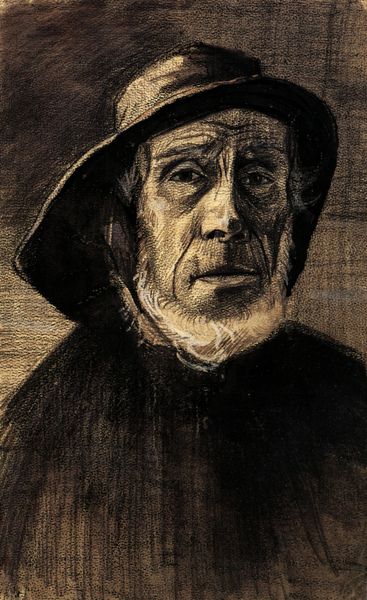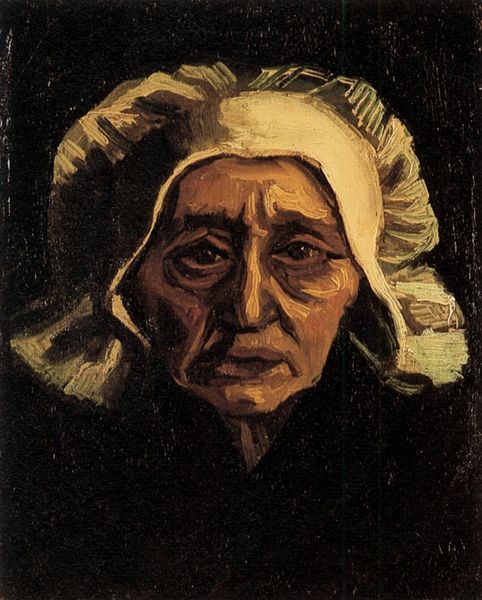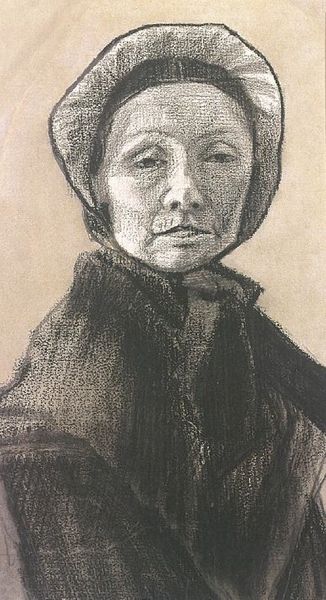
Copyright: Public domain
Vincent van Gogh drew this image, Head of a Woman, with crayon and pencil in the Netherlands. This drawing is one of many studies of the local peasants that Van Gogh undertook in the 1880s. Here, we see the influence of the Hague School of painting, which emphasized somber colors and the everyday life of the working class. The woman’s face is drawn with great sympathy, but her downcast eyes and lined face hint at the hardships of rural life. One might ask: What’s the politics of imagery here? Is this just a neutral record of a peasant woman, or does it carry a social message? To answer that, we can turn to Van Gogh’s letters and other drawings from this period. These sources reveal his deep engagement with social issues and a desire to depict the dignity of labor, as well as the institutions that shape artistic production. The meaning of this artwork is contingent on its social and institutional context. Only by understanding its historical setting can we truly appreciate its significance.
Comments
No comments
Be the first to comment and join the conversation on the ultimate creative platform.
